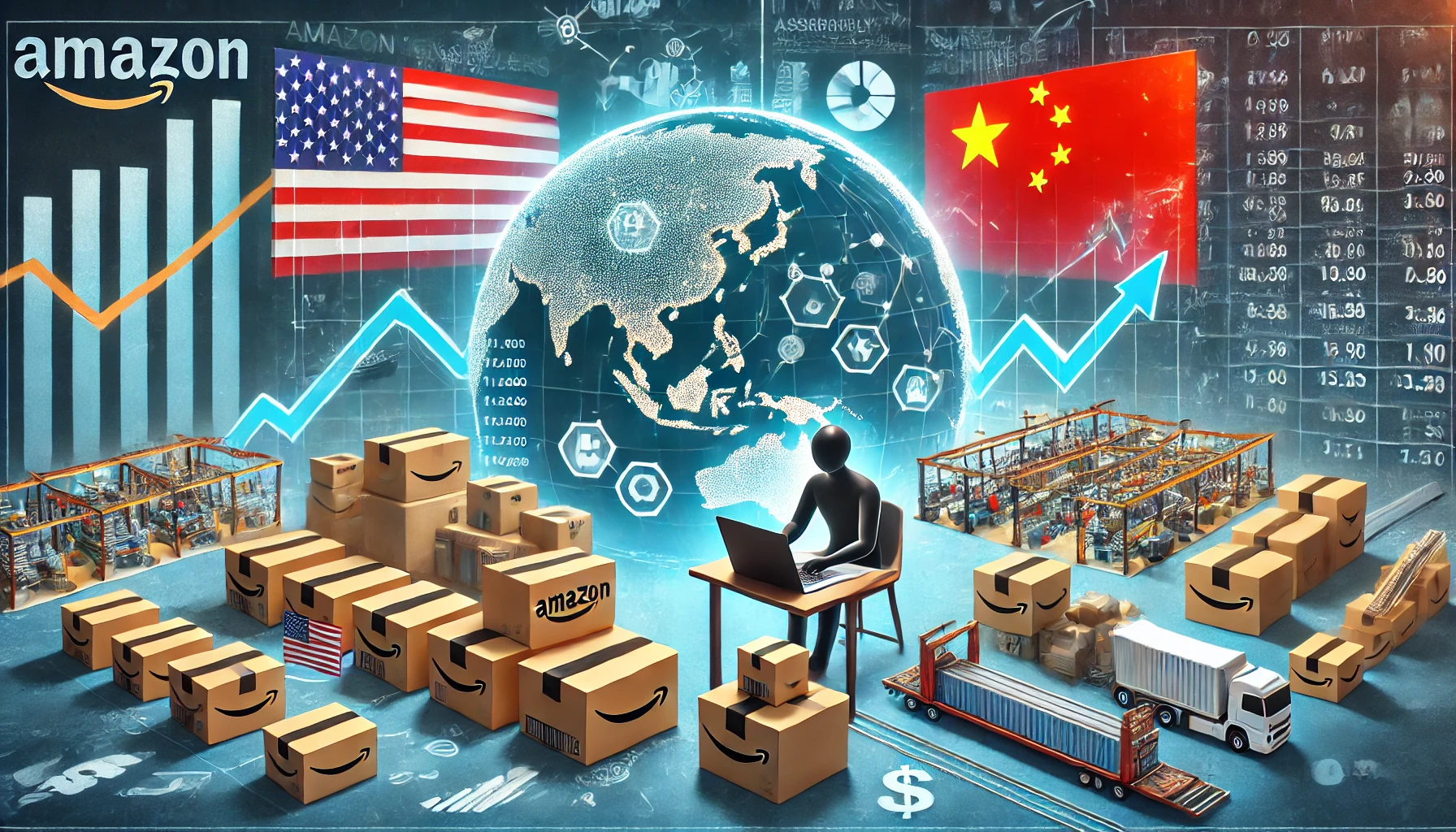How Trump’s 2024 Election Victory Could Reshape Amazon Selling
How Trump’s 2024 Election Victory Could Reshape Amazon Selling: Insights from Sellers Who Source from China
With the recent election of Donald Trump in 2024, Amazon sellers who rely on Chinese imports are bracing for potential policy shifts that could alter the e-commerce landscape. Many Amazon sellers depend heavily on products manufactured in China due to their affordability and established supply chains. However, anticipated changes to tariffs, import loopholes, and trade policies could create a need for quick adaptation. Here’s a look at what Amazon sellers are saying about this new landscape and their thoughts on navigating the potential challenges.
1. Shifting Supply Chains to Vietnam and Mexico
For many sellers, the most immediate response to trade uncertainty is to explore new sourcing countries. Vietnam and Mexico have emerged as potential alternatives to China, offering relatively low manufacturing costs and proximity to the U.S.
“Vietnam and Mexico are probably going to be the two biggest ‘winners,’ and are the two biggest countries that we’re going to focus on expanding to in the future,” shared one seller.
By diversifying supply chains, sellers can mitigate the risk of tariff increases on Chinese products. Yet, these alternative supply chains are not without challenges; sellers might encounter higher initial costs and infrastructure constraints, as these regions may not yet match China’s manufacturing efficiency.
2. Concerns About Finding New Suppliers
Some Amazon sellers, especially those with niche products or custom designs, are concerned about the feasibility of shifting to non-Chinese suppliers. Finding reliable manufacturers with the right expertise outside China may require extensive research, networking, and experimentation.
“I have suppliers in other countries for a few products, but I have no idea where I’d even find suppliers for some of these things,” said one seller, expressing concerns about sourcing specific products outside of China.
This challenge has led many sellers to search for alternatives using strategies such as querying for manufacturers, B2B distributors, and suppliers in countries like Mexico, Canada, and the EU. However, transitioning production to these regions may take time and add complexities to the supply chain.
3. Potential Closure of the Import Loophole for Smaller Packages
Many sellers wonder if the administration will close the “de minimis” import loophole, which allows packages valued under a certain amount to bypass tariffs when shipped directly to U.S. consumers. Currently, platforms like Temu and Shein benefit from this rule, as it allows small-value goods to enter the U.S. tariff-free. Sellers fear that without closing this loophole, tariffs on bulk imports may put them at a competitive disadvantage compared to smaller-scale direct shippers.
“I do wonder if he is going to close the import loophole for smaller packages direct shipped from China,” one seller mused. “If he increases tariffs but doesn’t close the loophole, then Temu and others will just increase their hold.”
Should this loophole remain open, large-scale importers would be at a disadvantage, as they’d face increased costs that wouldn’t impact small-package imports. For Amazon sellers, this discrepancy could increase competition and further pressure margins.
4. The Possibility of Lobbying and Trade Exceptions
While the potential for sweeping tariffs is a concern, some sellers believe large U.S. retailers heavily dependent on Chinese goods, like Walmart and Target, would likely lobby against blanket tariffs. These companies may seek to minimize the impact on their operations, possibly resulting in exemptions or more gradual tariff increases.
“Major U.S. retailers and industries that heavily depend on China… would lobby aggressively against such tariffs,” observed a seller, hoping for a balanced approach.
These lobbying efforts could reduce the tariff burden on Amazon sellers if successful. Nevertheless, the likelihood of policy exceptions remains uncertain, making contingency planning essential.
5. Rising Costs and Margin Squeezes Across the Board
One key concern among sellers is that tariffs will raise costs across entire categories of consumer goods, particularly low-cost products for which China remains the primary producer. This would lead to across-the-board price increases for these goods on Amazon, likely suppressing demand and reducing sales volume.
“I would think that this would equally suppress the margins of entire classes of products,” commented a seller, noting that China remains the only source for many inexpensive Amazon goods.
Tariff increases on these products would raise the cost of goods sold (COGS) for everyone, pushing prices up while limiting profit margins. This would make entry more challenging for new sellers, as experienced sellers with more resources would have an advantage in navigating higher COGS and leveraging existing supplier relationships.
6. The Potential Impact on Consumer Demand
Higher prices driven by tariffs and added costs could affect consumer purchasing power. With more expensive products, customer dollars won’t stretch as far, potentially reducing the demand for certain products. Experienced sellers may be better equipped to adapt by exploring alternate product categories or sourcing strategies, while newer sellers could find themselves struggling to stay competitive.
“Tariffs could apply across the board, so it wouldn’t be a competitive disadvantage, but overall sales would decrease because customer dollars wouldn’t go as far,” a seller explained.
If prices rise universally, Amazon shoppers might become more selective, leading to a greater focus on high-quality, essential items rather than cheaper, low-margin goods that traditionally drive volume.
The 2024 U.S. election has introduced new challenges and uncertainties for Amazon sellers who depend on Chinese imports. While some sellers are actively exploring alternative sourcing options in Vietnam and Mexico, others are concerned about the feasibility of finding non-Chinese suppliers for their unique products. Whether through tariff adjustments, changes to the de minimis loophole, or industry lobbying efforts, these policy shifts will impact both the cost structures and competitive dynamics for Amazon sellers.
For sellers, the road ahead requires flexibility, resourcefulness, and a proactive approach to supply chain management. As the geopolitical landscape evolves, successful sellers will likely be those who can anticipate changes and adapt their sourcing and pricing strategies to maintain profitability and resilience in an increasingly complex market.

